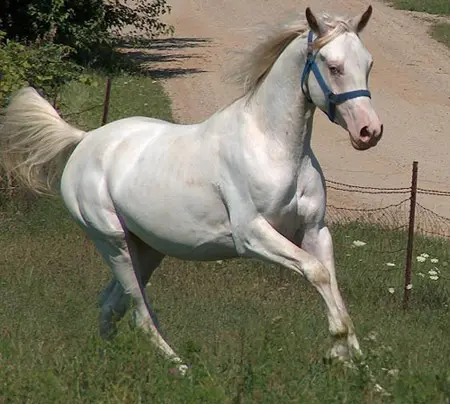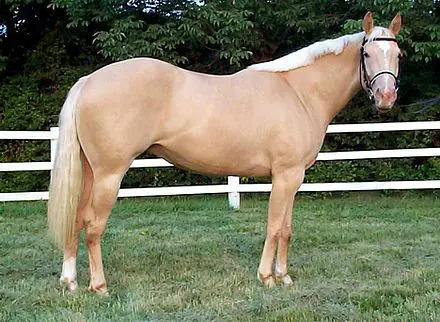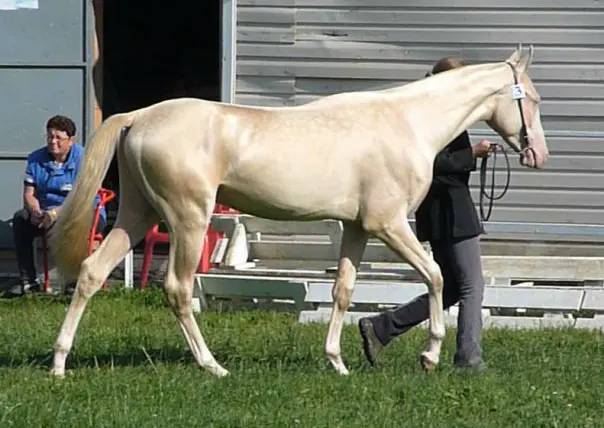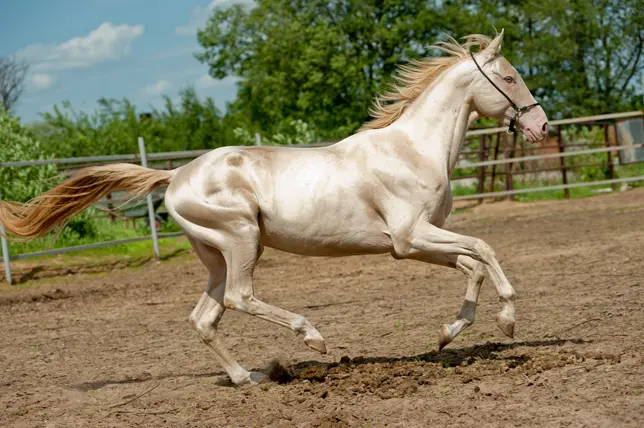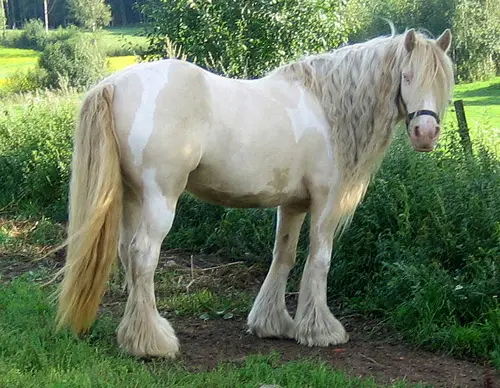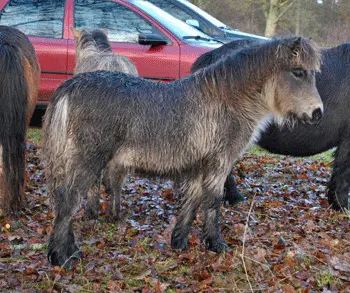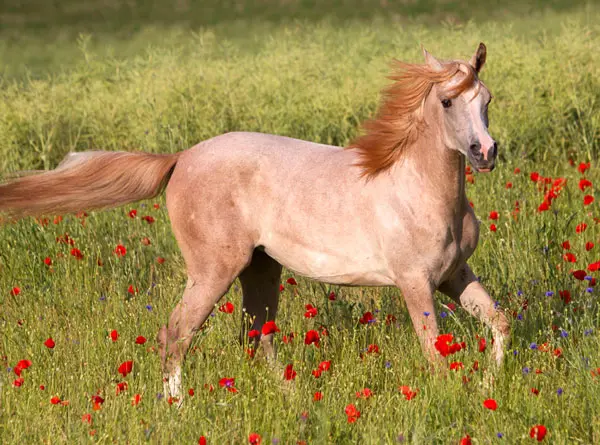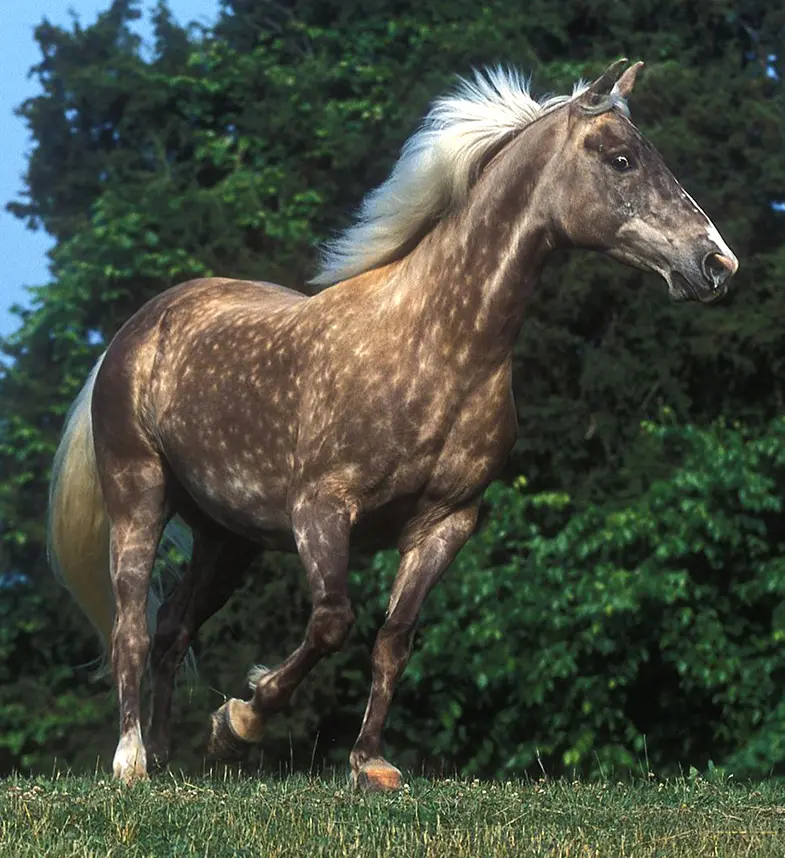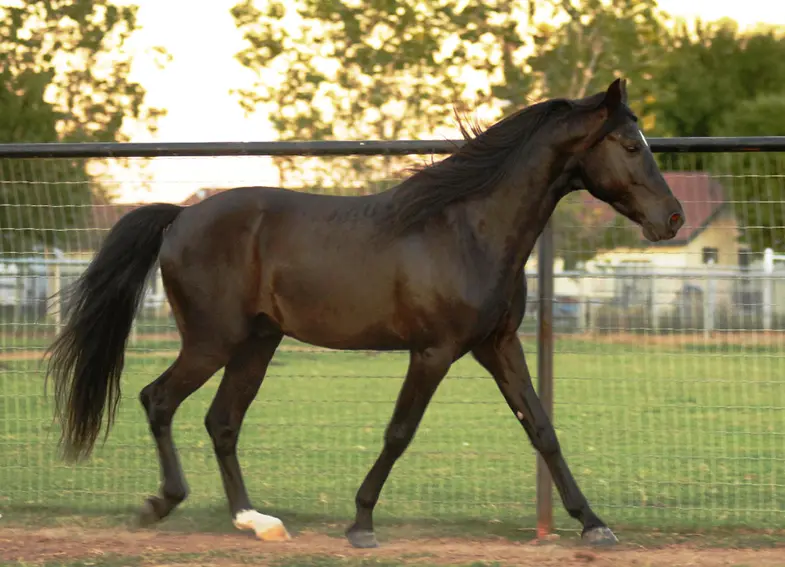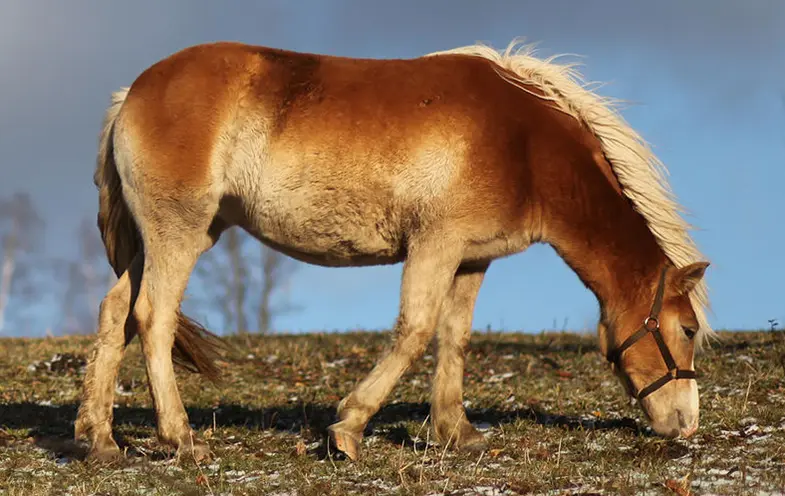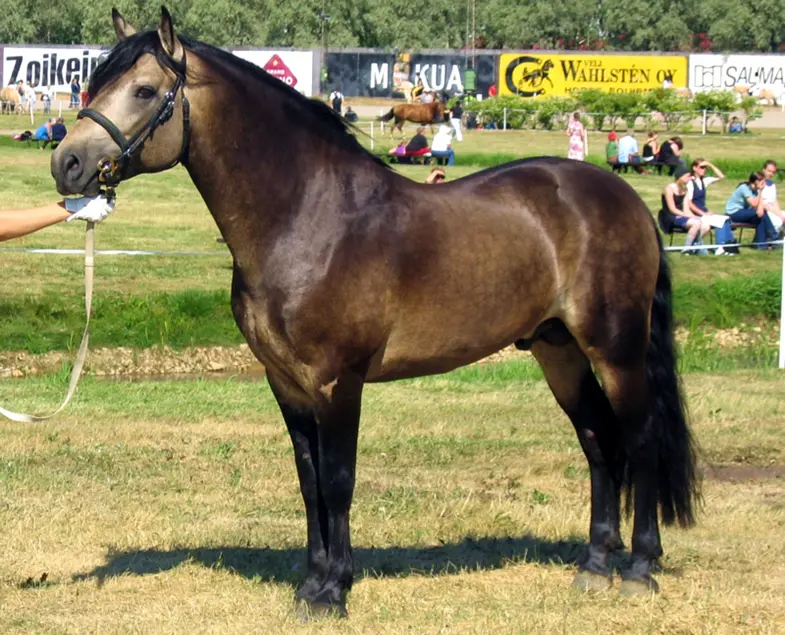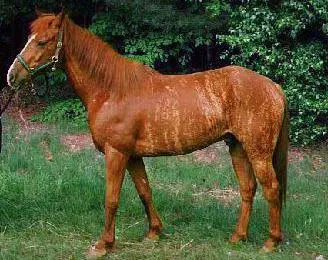There’s no doubt that horses are beautiful creatures regardless of their color but while you’ll obviously be aware of common colors such as black, sorrel and gray did you know there are a number of other much rarer colors that they can also be found in? Colors such as mushroom, champagne, and even pearl.
What horse colors are considered to be rare? The rarest horse color is true white (where the horse has pink skin), but colors such as champagne, cremello, perlino, smokey cream, mushroom, pearl, silver dapple, smokey black, pangaré, sooty, and brindle are also considered to be rare.
The role pigment plays on horse colors
The dictionary definition of pigment is the natural color of tissue which is why it can have such an effect on the color of a horse. If part of a horse has no pigment at all then the hairs that grow out of that area will be white, which is one of the reasons why we need to protect them from the sun’s UV rays in the same way we do ourselves.
Dark horses, on the other hand, will have a higher concentration of pigment whereas lighter horses will have a lower concentration. Some colors, such as the cremello and perlino have a lower concentration of pigment that is diluted with the cream gene which, along with the presence of white hairs will make the coat even lighter, in these cases, it would be the base coat that would be considered when identifying the horse’s color.
Dilution horse colors
When any of the basic colors (black, bay, chestnut/sorrel, or gray) are mixed with one or more dilution genes they will produce a whole new range of colors that are, in most cases lighter versions of their base color. These can include colors such as mushroom, champagne, cremello, and perlino.
The 12 rarest horse coat colors
Horses can be found in a wide range of different colors but there are 12 colors that are considered rare.
White
While gray horses aren’t rare at all, a truly white horse (i.e. one that has pink skin, brown eyes, and white hair) is probably the rarest color around. This is because there are only three ways that are horse can be truly white.
- Dominant White Gene – Also known as white spotting, this is a group of genes (known as ‘W’) that are all known to create a true white horse.
- Sabino – Horses with two copies of the Sabino 1 gene will be truly white 95% of the time.
- Lethal white syndrome – More commonly associated with some breeds (such as the Paint Horse) this is a genetic disease (caused by a horse having two copies of the frame overo (or ‘W’) gene) that will produce a white foal but will also prevent the colon from developing properly. Sadly foals with this disease will normally die within three days but because this is often painful the foal is more often than not humanly euthanized.
Breeds with white coats
Being such a rare color there are very few breeds that have true white horses but the Camarillo White Horse is the only breed that is truly white.
Champagne
This is a rare coat color that is created by the presence of the champagne gene which, like the cream gene is a dilution gene. Most, but not all horses, with this gene, will have hazel-colored eyes as well as pink mottled skin which can be bright blue or pink at birth.
The shade of champagne that is created by this gene is dependent on the base color as well as how many copies of the gene the horse has.
- Gold Champagne – A chestnut horse that has inherited the gene from both parents, ie they have two copies of the gene.
- Amber Champagne – Is from a bay horse, the intensity of the amber will be determined by the number of copies of the gene.
- Sable Champagne – This is the result of a dark brown (or seal brown) horse having a single copy of the gene.
- Classic Champagne – Black horses with the champagne gene (regardless of the number of copies) will produce the classic champagne color.
Breeds with champagne coats
While horses carrying the champagne gene can be found in breeds such as the Tennessee Walker and Quarter Horse, most American Cream Drafts are gold champagne.
Cremello
The cremello color, which can range from pale cream to light tan, is produced when a chestnut or sorrel horse has two copies of the cream gene (which means that they’ve inherited it from both parents). Cremello is often mistaken for white but they’re both genetically different with a white horse having no pigment at all and therefore having pink skin.
Breeds with cremello coats
Having a chestnut basic color, the cremello can be found in a number of breeds such as the Quarter Horse, Saddlebred, and even the Shetland Pony.
Perlino
Like the cremello, the perlino color is caused by the presence of two copies of the cream gene, although this time the base color is bay. The cream gene causes the body to lighten to a tan color that can sometimes appear orange. The eyes are often blue while the points are still darker than the rest of the body but can range from a reddish color to a rusty one.
Breeds with perlino coats
Perlino can be found in any breed that allows the basic bay color but because it requires two copies of the cream gene it’s a color that can be hard to find. That said they can be found in breeds such as the Andalusian, Lusitano, Akhal-Teke and Quarter Horses.
Smokey Cream
While being almost identical to the cremello or perlino the smokey cream is genetically different. All of the colors are caused by two copies of the cream gene but, as the name suggests, in this case, the base color is black.
Breeds with smokey cream coats
Breeds such as the Akhal-Teke, Paint, and Falabella can all have smokey cream horses but it’s probably more common in Quarter Horses than any other breed.
Mushroom
You might not believe it but this really is a dilution gene that will, when present in red based horses, produce a horse with a pale tan coat. To the best of my knowledge, there’s never been a case of a black based horse carrying the mushroom gene.
Breeds with mushroom coats
DNA testing has shown that while the mushroom gene can be found in breeds such as the Quarter Horse and Thoroughbred it’s more common in Shetland Ponies and Icelandic Horses.
Pearl
This dilution gene, which is often referred to as a ‘barlink factor’ in breeds such as the Quarter Horse, will lighten the coat of red horses to an apricot color and commonly also causes the horse to have blue eyes. Some horses will also have the cream gene that will lighten the coat even further, making it similar in appearance to the cremello or perlino.
Breeds with pearl coats
The pearl gene is extremely rare and can only be found in a few breeds, mainly only Spanish breeds such as the Andalusian or those, such as the Quarter Horse, that have descended from Spanish stock.
Silver Dapple
The silver, or silver dapple gene can be carried by any color horse but will only affect those with a black coat. Sometimes referred to as chocolate, flax, or taffy, the body coat will be a deep chocolate color while the mane and tail will always be white. The appearance is similar to that of the Black Forest Horse, although in that breed the color is genetically different from a true silver dapple.
Breeds with silver dapple coats
While breeds such as the Missouri Foxtrotter and Morgan can carry the silver dapple gene it’s more common (and more noticeable) in the Rocky Mountain Horse, Shetland Pony, and Icelandic Horse.
Smokey Black
A smokey black horse will have a black coat that appears to be washed out which is why they’re sometimes mistaken for faded black horses. The smokey black color though is caused by the presence of the cream gene on any black base color.
Breeds with smokey black coats
The presence of the cream gene in horses with a true black coat is rare but the most common breeds to carry this combination are the Morgan and Missouri Foxtrotter.
Pangaré
The pangaré modifier will cause lighter hairs to be ‘scattered’ over a horse’s body causing the base coat to lighten, this is especially evident around the muzzle, belly, and flank of the horse.
Breeds with pangaré coats
The Norwegian Fjord is probably the most well know breed to display the Pangaré gene.
Sooty
This is a gene that can be present on any color base coat and has the opposite effect to that of the pangaré modifier. The sooty gene (or modifier) will darken the hair by the presence of dark hairs over the whole body, the mane and tail are often unaffected.
Breeds with sooty coats
The sooty gene can be found in pretty much all horse breeds, although its more noticeable in older breeds such as the Akhal-Teke, Brumby, Haflinger, and Shire Horse.
Brindle
More common in other animals than it is in horses, this coat pattern can be present on any base color at all and is sometimes referred to as tiger-striped. It’s characterized by zebra (or tiger) stripes that cover the whole body, they’re normally darker but occasionally the stripes can be lighter than the body color, if this is the case then the pattern is known as reverse brindle.
Breeds with brindle coats
There have only ever been a few breeds that have been known to produce the brindle coat pattern and they include the Mustang, Thoroughbred, Quarter Horse, and Arabian.
I hope you found this article helpful. If you did I’d be grateful if you could share it please as it would really help me.
Recommended products
Over the years I have tried hundreds of different horsey products, from various blankets and halters to different treats. Some I’ve loved, others I’ve hated but I thought I’d share with you my top all-time favorite products, the ones I never leave the yard without. I’ve included links to the products (which are in no particular order) that I really think are great.
- Horse Knots by Reference Ready – If you’re like me and enjoy pocket reference guides then you’ll love this knot tying guide. These handy cards can easily fit in your pocket or attach to the saddle for quick reference. They’re waterproof, durable and are color coded to make them easy to follow.
- Mane ’n Tail Detangler – Even if you never show your horse you’ll need to detangle his tail from time to time (and possibly his mane too) which is always a challenging chore! I’ve found that if I run a little bit of detangler through my horse’s tails every few days it stops them from getting matted up and makes combing them easy, even if they’re coated in mud. I don’t know if I should admit to this or not but it also works wonders on my hair.
- TAKEKIT Pro clippers – Over the years I’ve tried a lot of different clippers and while some were obviously better than others I found these to be by far the best. They are heavier than a lot of other clippers but for me, that’s a good thing, it makes them feel more sturdy and hardwearing. On top of that they have a range of speeds so are just as good for clipping your horse’s back as they are his face. I also like the fact that they come in a handy carry case but that’s not for everybody. The company that makes them is super good and incredibly helpful too, a real bonus these days. The only thing I wasn’t keen on was the fact that it doesn’t come with any oil, but that’s not a major problem as it’s not difficult to buy lubricant.
- Shire’s ball feeder – There are so many boredom buster toys out there but I like to use these every day, regardless of whether or not my horses are bored. I find that it helps to encourage my horses to problem solve by rewarding them with treats (or pieces of fruit) but it also mimics their natural grazing behavior which helps to keep them calm and de-stressed.
- Horse safe mirror – This is a strange one that many people are surprised about but I like to put horse safe mirrors in the trailers as well as in the quarantine stalls. It helps to prevent the feeling of isolation by giving the impression of other horses being around. Being herd animals horses can get extremely stressed when they feel that they’re on their own but with these stick-on mirrors, they believe that at least one other horse is with them.
- Rectal thermometer – I know this isn’t glamourous at all but it’s vital for your horse’s well-being to be able to check their temperature and a rectal thermometer is the easiest way of doing this which is why I’ve added it to the list.
Shopping lists
I’ve also put together a few shopping lists of essential items that I’ve found helpful over the years. I’ve broken the lists down into different categories rather than put everything in one massive list 😉

